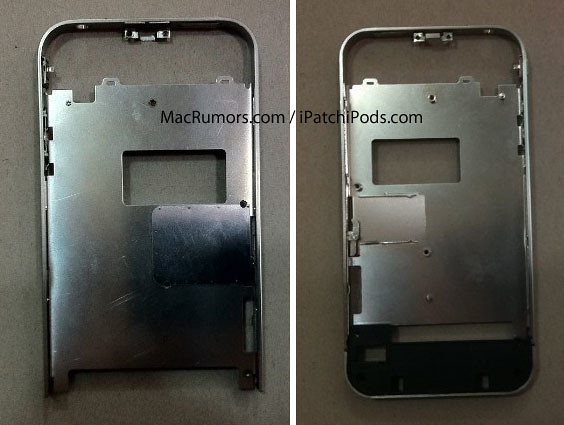After the drama regarding the original iPhone 4 antenna, Apple went back to the drawing board to alleviate initial complaints regarding signal attenuation. These antenna improvements were evident in the Verizon iPhone in that the CDMA version of the iPhone 4 employed a dual antenna design that improved reception. Of course, it also helps that Verizon has a much better network with respect to call quality and the incidence of dropped calls than AT&T.
The latest iPhone rumors point to a dual iPhone launch this coming October where Apple will release a cheap iPhone 4 with 8GB of memory alongside a more advanced iPhone 5 sporting a larger edge to edge screen. Also of note is that the next-gen iPhones will reportedly run on both Sprint and T-Mobile, effectively putting the iPhone all of the major US carriers.
Regarding the cheaper model iPhone 4, which will likely be called the iPhone 4S, MacRumors today obtained photos of an iPhone 4S casing which shows some distinct design differences from the iPhone 4’s outer frame.

Note that the photos above are of the same casing – the photo on the left depicts the front while the photo on the right is the same casing turned over.
The mid-frame images above show that this so-called iPhone 4S will have two antenna breaks at the bottom of the casing. This differs from both the AT&T (GSM) iPhone 4 and Verizon (CDMA) iPhone 4. In AT&T’s iPhone, the antenna breaks are in two spots, along the lower left side and top left sides. On the Verizon’s model they are both at the top sides of the casing.
The reason for the movement of the antenna breaks is to accommodate different frequencies of the different mobile technologies. This “iPhone 4S” appears to have a slot for a SIM card, suggesting that at a minimum it will support the GSM standard like the original AT&T iPhone 4. It is believed the iPhone 5 will support both GSM and CDMA, but we haven’t heard anything definitive about the band support for this iPhone 4S.
via MacRumors





Thu, Aug 25, 2011
News, Rumors